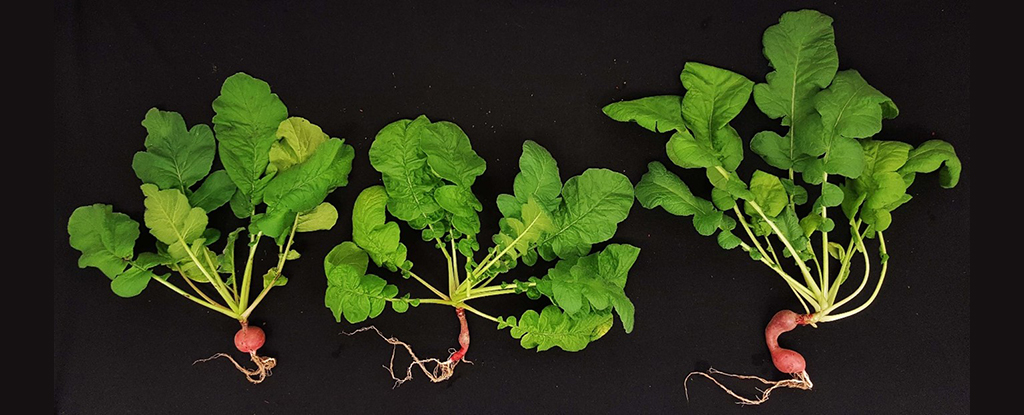Products You May Like
Once we’ve overcome all the challenges involved in getting to Mars, we’ll then have to figure out how to make life sustainable there – and growing and cultivating crops is going to be a major part of that.
As you’ll know if you’ve seen Matt Damon’s struggles in the movie The Martian, the landscape of the red planet could in theory grow crops, a possibility backed by NASA experiments.
But it would be far from straightforward. Not only is the grit and dust devoid of organic matter and helpful microbes, it’s also full of salts and minerals that make most plants struggle for survival.
Now a new study suggests a way forward: alfalfa plants. This forage crop would be capable of surviving in tough volcanic soil like that which covers Mars, researchers have determined, and could be then used as fertilizer to grow food like turnips, radishes and lettuce.
“The low nutrient content of Martian soil and high salinity of water render them unfit for direct use for propagating food crops on Mars,” write the researchers in their published paper.
“It is therefore essential to develop strategies to enhance nutrient content in Mars soil and to desalinate briny water for long-term missions.”
Previous research has indicated that plants are going to have a real struggle growing on the Martian surface without extra nutrients being added to the soil (or regolith) they’re placed in. That’s where alfalfa plays a part.
Getting an exact match for the regolith on Mars is tricky, but the researchers put together the best approximation they could, before testing different seeds in it.
They found that alfalfa was able to grow as healthily as it does in Earth soil, without any additional fertilizer.
Simulated Martian regolith was then tested with alfalfa added as a fertilizer. Turnips, radishes and lettuces – three plants that require little in the way of maintenance, grow quickly, and don’t need much water – were all grown successfully.
There is a catch though: fresh water was also needed. Based on further experiments, the team thinks the briny water available on Mars could be treated with a type of marine bacteria and then filtered through volcanic rock in order to produce the fresh water needed for crop growth.
“For the first time, we report an integrated use of a biofertilizer and microbe for effective treatment of basaltic regolith soil and briny water simulants, respectively, for suitable resources that sustain plant growth,” write the researchers.
There are lots of questions still to answer, not least how accurately we can mimic the Martian soil down here on Earth. It’s likely that when we do finally make it to the red planet, the surface regolith won’t be exactly as we supposed it to be.
The simulated soil was also missing some of the toxic perchlorate salts, which would need to be somehow washed out of Martian soil by the desalinated water.
However, the experiments outlined in this study give scientists and astronauts some more promising options to explore. The approaches the researchers have described are simple to put into practice and efficient in operation.
Growing alfalfa on Mars to use as a fertilizer would certainly cost less than transporting vast refrigerators of food across millions of kilometers to the red planet – and it’s not the only source of nutrients we might be able to produce away from Earth.
“This study signifies that for long-term purposes, it is possible to treat in situ soil and water resources for farming on Mars to sustain human missions and permanent settlements,” write the researchers.
The research has been published in PLOS One.
